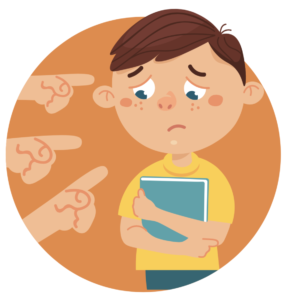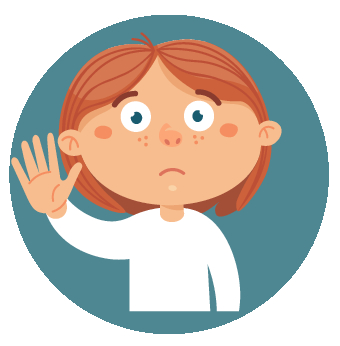Three Roles in Peer Bullying:
Child Who Bullies, Child Who Is Bullied, and Child Who Witnessed Bullying
Peer bullying; We can talk about three roles: being subjected to bullying, perpetrating this behavior, and witnessing this situation. Sometimes these roles are markedly divergent, and sometimes a student can be both bullied and perpetrating. Recognition of these roles is of great importance in terms of early response to the problem and recognizing student needs. This data is at a distance from the stereotypes of children by reconciling them with certain characteristics. The main purpose is to contribute to the processes of social work/ teacher and school administrative officers to observe children, to recognize their needs, to evaluate appropriately, and to intervene based on the characteristics given.
Characteristics of a Child Who Perpetrates Bullying
- It is usually physically energetic, active, and most physically strong.
- He is (sometimes) older and larger in the body than the victim.
- While communicating, he/she can act quick-witted, cynical and sarcastic.
- He/she is usually independent and appears to be able to assert himself/herself with confidence. For example he/she knows how to escape when he/she gets into trouble with the authority.
- He/she can have a popular image among its peers.
- He/she has a power-based sense of self. It is observed that he likes to show leadership based on dominance, being in control, and oppressing others.
- It is seen that their problem solving skills may be low, they can get angry easily and they may resort to aggressive attitudes to solve problems.
- They can be insensitive and irresponsible towards others and have difficulty empathizing.
Characteristics of a Child Who Is Bullied
- In general, his/her physical development may lag behind the peers.
- He/she is mostly timid and introverted in terms of personality traits. They may seem anxious and passive.
- He/she may have difficulty communicating and expressing himself/herself.
- He/she often has low self-esteem.
- He/she thinks he/she has failed and may feel powerless, undesirable, and unattractive.
- In the face of problems, feelings of helplessness and anxiety can easily occur.
- His/her social skills are weak, he/she can submit easily.
- Their perspective of peer relationships is negative, he/she may have difficulty finding support and making friends.
- They are usually unpopular, ostracized by her peers, and can be lonely.
- From an early age, it was determined that he/she had an extremely cautious and sensitive temper.
Characteristics of a Child Who Witnessed Bullying
- He/she can carry the perception that the school is not a safe place, he/she may feel insecure and uneasy in the school. That might keep them from taking action.
- He/she may be conflicted between feelings of being responsible for the experiences of the bullied student and trying to protect him/her and the fear of becoming the target when he/she opposes the person who is bullying him/her.
- Sometimes, in order not to experience a similar situation, he/she can establish a friendship with the person who exhibits bullying behavior based on fear.
- The student who witnessed the bullying may feel helpless and may not realize his/her power to solve the problem.
You can share our “Three Roles in Peer Bullying” blog post by tagging us on your social media accounts.













